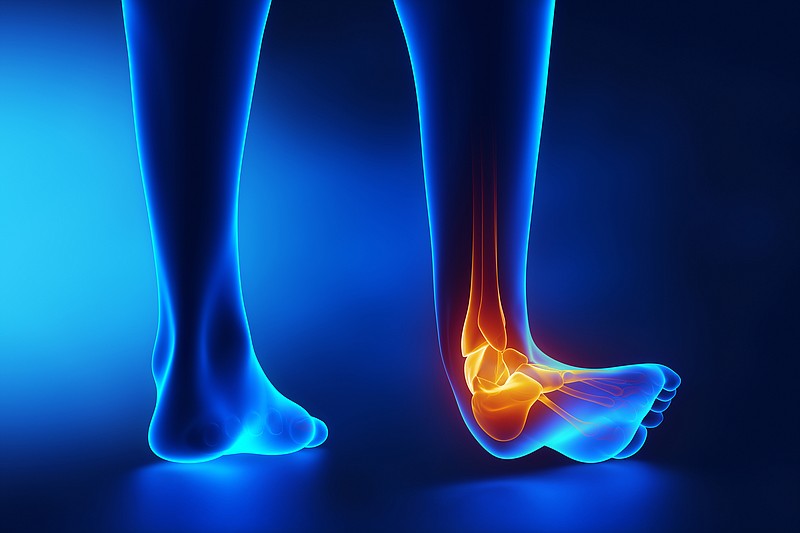More Info
About our expert: Doug Gregorie is an emergency room physician at Erlanger Medical Center as well as a local rock climber, trail runner and cyclist.
There's nothing quite as cringe-worthy as the split-second you take a wrong step on the trail and feel your foot twist in a way it really shouldn't.
Google what the most common hiking injury is and you'll find it's invariably an injured ankle - whether it's a twist, a sprain or a break. A twist isn't ideal, but it's generally mild enough that you can walk on your own two feet out of the woods.
But with severe sprains and breaks, it gets tricky. So if your next stride on the trail goes awry, and you're outside of a cellphone service area
Here's what you need to know.
INITIAL ASSESSMENT
The difference between a break and a sprain is obvious, says Erlanger emergency room physician and local outdoorsman Doug Gregorie. A break involves the bone, whereas a sprain involves the ligaments that hold the bones together.
Though a break seems the most worrisome out of the two, both can be serious injuries. "A lot of people say, 'Oh well, it's only a sprain,'" says Gregorie. "A sprain can actually be quite severe and involve surgery down the road."
Of course, delineating whether the injury is a sprain or a break isn't really a priority while you're still out on the trail, he adds, explaining that those decisions most often need to be made with the help of a radiologist. What is important is figuring out how to get the injured person out of the woods and to emergency help.
First things first: Can the injured walk? "When you're out in the middle of nowhere and the injury is acute and someone is in pain, a lot of it's going to be about whether a patient can bear weight on it or not," Gregorie says.
If they can bear weight on the injury, it most likely isn't severe. "The more power the person can provide in their own extraction, the faster things are going to go," Gregorie says. But, he notes, if bearing weight on the injury is intolerable, they should not try to do so.
If they can't bear weight, "You're looking at a pretty long extrication, depending on how far out you are, because that person isn't moving too fast."
ACTION PLAN
Support the joint. "Hopefully you have brought some measure of first aid," says Gregorie. "One thing I pretty much always carry in my pack is a Sam Splint, commonly carried by EMS services, search and rescue teams, first responders." A splint like this comes in various lengths and widths and can be molded into whatever shape needed, though you'd typically need something like Ace wrap to secure it in place.
If you don't have a go-to splint like this on hand, you can wrap the injury in gauze and duct tape, or whatever else you have, to give the joint support.
If it's a severe break in which bones are protruding from the skin, Gregorie says to first stop any hemorrhaging by applying pressure to the wound. "Apply direct pressure to the site of the bleeding. Hold pressure for 10 minutes before even considering looking at it," he advises. "If there's concern of a person literally sitting there bleeding to death from an open fracture, you would potentially consider a tourniquet above the level of bleeding. That's pretty extreme, though."
If bleeding is under control, Gregorie says to wrap the open fracture wound in moist gauze or a shirt to keep the tissues moist and to hopefully keep out any dirt. Don't try to push the bones back in as this will likely push dirt into the joint space, leading to problems down the road. "Open fractures are pretty serious and they very commonly get infected," he says. "The faster you can get the person to definitive care in the hospital, the better."
The injured can throw an arm around a fellow hiker if they can bear some weight on the injured foot, and start heading out. If they can't bear any weight, they may need to be carried. The extrication process may be tedious, but the sooner you can get to a place with cell reception or more help, the better.

